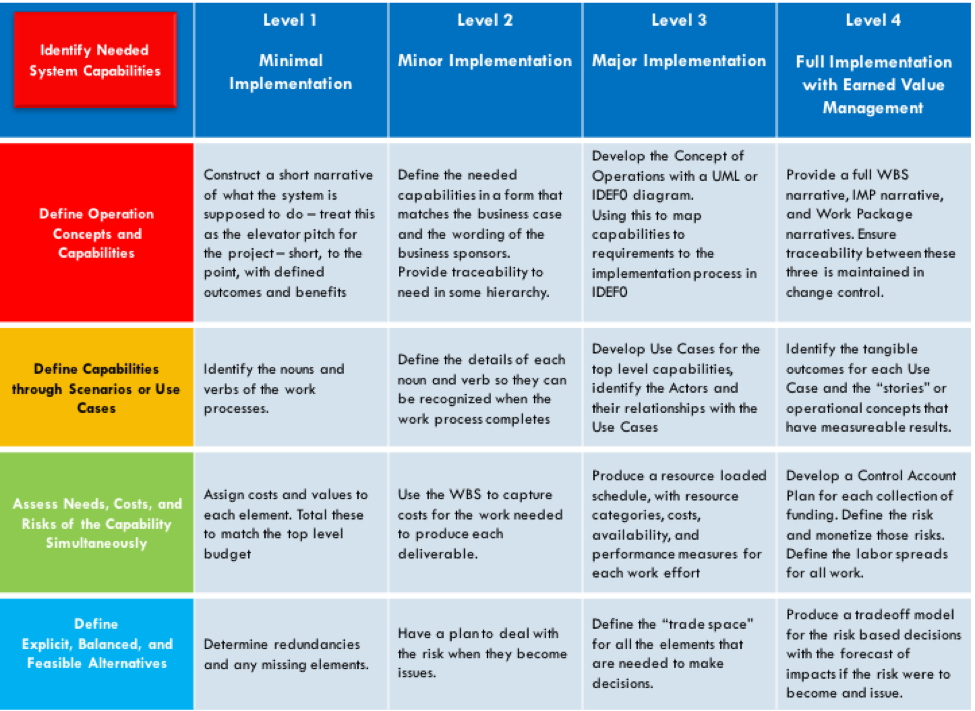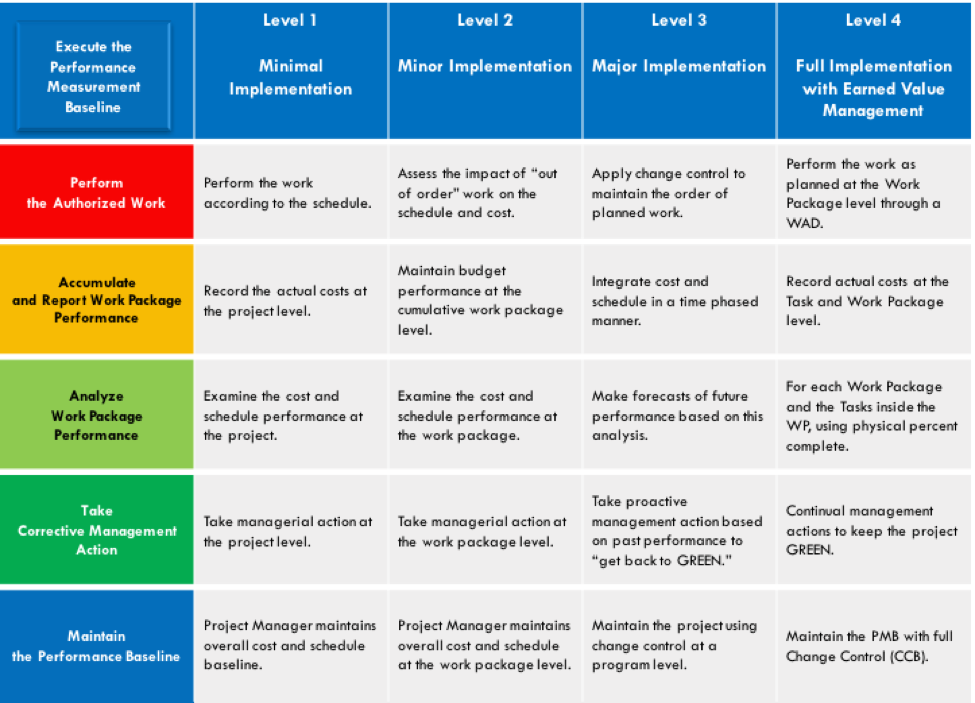With the principles, practices and processes in place, we need to pull all these together into a coherent program management process. Let’s review the Five Immutable Principles. I’ll use charts here instead of words, since a big visible chart is a powerful conveyer of information in ways words can never accomplish ‒ especially in the project management paradigm. Reports and spreadsheets can be read and then ignored. A large chart appropriately be placed on a wall in the work area, showing the current status of the projects, the performance of the work efforts and the expected outcomes.
Let’s start with the Five Principles and answer to what degree of fidelity do I need to answer these questions, depending on the complexity of my project. Let’s have four levels ‒ minimal, minor, major, full up government compliance.

The needed capabilities can be defined across these four levels.

The requirements baseline of the technical and operational requirements that implement the needed capabilities can be defined in four levels as:

Putting this work and plans on a Performance Management Baseline can take on four levels as well.

Executing the planned work in the planned order using the Performance Management Baseline can have different meanings.

Managing the risks from the project uncertainties can have levels of implementation as well.

Each of these processes supports the Five Principles. Each can be tailored to meet the needs of the performing organization and the customer. Determining what level is needed for each process is part of governance for the project.
For each of these levels, we need documents to manage successfully. What documents can be used to answer the question that comes from the Principles, Processes and Practices?

Increasing the Probability of Program Success (PoPS) requires asking and answering the Five Immutable Principles. This is necessary but not sufficient. For success program health factors are needed for calculating this probability of program success. These health factors provide objective and quantifiable measures for comparing and evaluating the likelihood of success for a program.
This evaluation and comparison starts with determining the factors issues that adversely impact success of the program execution:
- Program requirements
- Parameter requirements – progress toward defining capability requirements and meeting those requirements
- Scope evaluation – stability of capability requirements (scope or quantity) from the previously established baseline and the impact of requirements changes on program cost and schedule
- Concept of Operations (ConOps) – Progress toward developing the CONOPS and using it to inform program requirements and strategies.
- Program resources
- Budget – sufficient current year funding for the planned work
- Manning – stability and adequacy of technical and managerial staff
- Program planning and execution
- Cost and schedule estimating – Status of cost and schedule estimating activities, the confidence level associated with the current cost and schedule estimate.
- Cost and schedule performance – measures of physical percent complete against plan.
- Subcontractor performance
- Technical maturity – Identification and tracking of critical technology elements to ensure technologies are sufficiently mature
- Program risk assessment – Assessment of technical and programmatic risks, the risk handling processes and the risk retirement plans embedded in the master schedule
Glen Allenman is part of the GovLoop Featured Blogger program, where we feature blog posts by government voices from all across the country (and world!). To see more Featured Blogger posts, click here.





Leave a Reply
You must be logged in to post a comment.